In 2019, cannabis laws in the United States are quite a mash-up – and most of them are in opposition to federal marijuana laws. Numerous states and Washington, D.C. have legalized full recreational and medical use, certain states have legalized marijuana for medical use only, while other states still have an overall ban on cannabis.
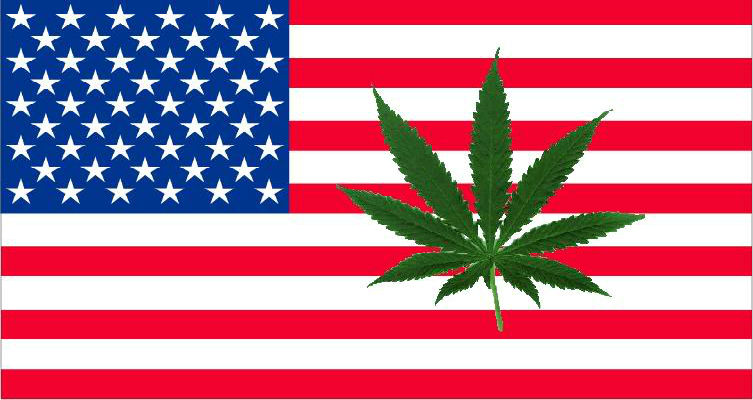
Why can’t federal marijuana legalization pass in the United States?
As state cannabis laws have continued to change over time, one thing has stayed the same: federal marijuana legalization has lagged. Marijuana still remains classified as an illegal Schedule I drug by the United States federal government. This has forced states into a delicate dance in which they oversee legal operations within their borders while keeping a cautious eye on the federal government (which as of the time of publication has not begun cracking down on state-sanctioned marijuana retailers).
Why is cannabis still illegal at the federal level in the U.S. and how did it originally come to be so? There’s more at work here than just reefer madness. Here are some of the players in the game against American cannabis legalization.
Player 1: Industrial Corporations
The federal fight against cannabis in the U.S. didn’t start out targeting marijuana. When it first began, the war against cannabis was a war against hemp.
Hemp is a non-psychoactive form of cannabis that contains practically no THC. While hemp isn’t effective for getting you high, it is excellent for making fiber for all sorts of products from rope to paper and clothing.
In the 1930’s, this last fact put hemp in the crosshairs of American newspaper mogul William Randolph Hearst, as well as Lammot du Pont, head of the DuPont chemical company (which had only recently patented a spanking-new substance known as nylon). Hearst and DuPont had the ear of Secretary of the Treasury Andrew Mellon (who had also invested in nylon).
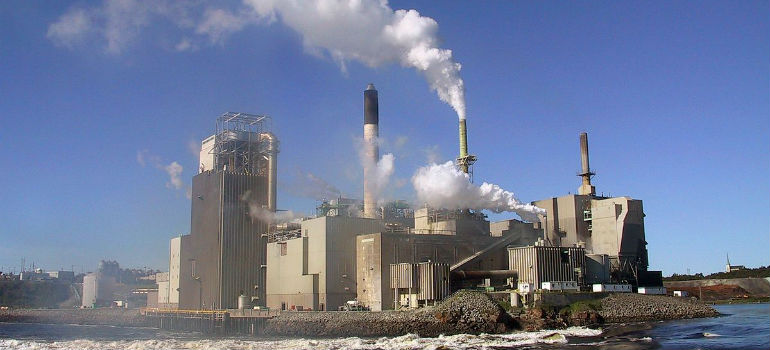
The criminalization of cannabis started off with pressure from powerful companies.
Mellon’s nephew, Harry Anslinger, formed the Federal Bureau of Narcotics in 1932. He helped kick off a decades-long public relations and legislative campaign against cannabis that included popularizing the Spanish name for it – “marihuana” – to make it sound more dangerous and exotic. Fear-mongering, racist letters and advertisements insisted that marijuana turned people into hallucinating, drug-crazed criminals, especially people of color and Mexicans who used the drug.
In 1937, the Marijuana Tax Act was passed, making it nearly impossible to possess or sell cannabis in the United States. This got the ball rolling on federal criminalization, and in 1956, marijuana was included in the Narcotics Control Act. Finally, cannabis was classified as a Schedule I drug by the Controlled Substances Act of 1970, officially making marijuana possession as serious an offense as possessing harder drugs like heroin or cocaine.
From a federal legal perspective, this is where cannabis is still classified as of 2019. All attempts to reclassify it have failed – most recently in 2016 when the DEA deemed marijuana as having a high potential for abuse and having no accepted medical use. Its classification doesn’t just hamper federal marijuana legalization efforts; as long as marijuana is classified as a Schedule I drug, this impairs scientists’ ability to do research in order to document its medicinal value.
Player 2: State Governments
Given that state governments are currently leading the charge to legalize cannabis, it seems strange to imagine that they were instrumental in criminalizing it in the first place. This was partly due to cannabis getting caught up in the wave of alcohol prohibition that swept the United States in the early 1900s.
States were also concerned about cannabis being used for a variety of questionable and potentially dangerous medicinal products. One such product, for example, was a potent cough syrup that contained alcohol, cannabis, morphine, and chloroform. When these products were banned, pharmaceutical companies stepped in to develop effective non-cannabis painkillers, sleep aids, and other medications. This brings us to the next player in the war against marijuana legalization at the federal level: Big Pharma.
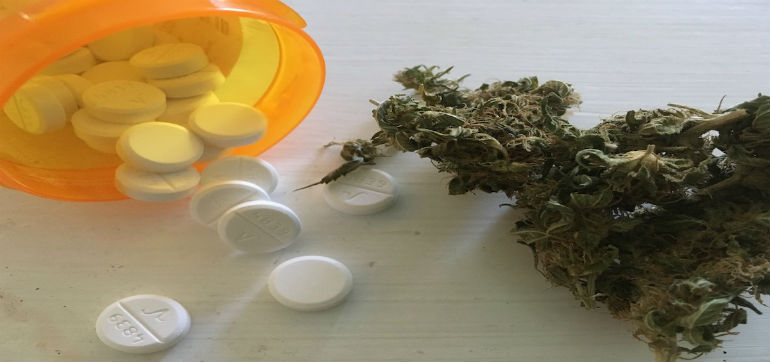
Pharmaceutical companies are one of the top lobbyists against cannabis legalization in the United States.
Player 3: Pharmaceutical Companies
From aspirin to opioids, once the American pharmaceutical industry discovered that the public needed what they had to sell, they began staging a battle to maintain their standing in the marketplace. Part of this has been a steadfast lobbying campaign against cannabis, which they see as a real threat to their bottom line. In 2019, alcohol manufacturers, the for-profit prison industry, and pharmaceutical companies are the top three lobbyists against marijuana legalization in America.
As more states are opening the doors to medical cannabis for everyone from those with chronic pain to anxiety sufferers and cancer patients, drug manufacturers are being put on their heels. In addition to being quite effective, patients are finding the cannabis is less addictive and has fewer side effects than prescription medications.
This is particularly the case for opioids. In states with legal medical marijuana, opioid prescription rates are plummeting. Numbers vary depending on the study, but a look at low-income adults covered under Medicaid showed a 6 percent drop in opioid prescriptions in states with legal medical cannabis. Among older adults enrolled in Medicare, doctors prescribed 3.7 million fewer daily doses of opioids when those patients had access to legal medicinal marijuana.
Pharmaceutical companies like Insys (which manufactures a fentanyl-based painkiller spray) are taking notice, donating money to keep cannabis illegal even as they work to develop their own synthetic versions of THC to sell for medicinal purposes. In 2016, Insys received FDA approval for a drug called Syndros, a cannabinoid that’s used to treat nausea in chemo patients, as well as anorexia in people with AIDS. Keeping cannabis illegal at both the state and federal level will allow companies like Insys to continue generating the maximum amount of profit on their current lineup of drugs. It will also pave the way for them to be the exclusive sellers of their synthetic cannabinoid medications even as patients are prevented from growing or purchasing less-expensive, all-natural cannabis.
Player 4: The American Public
It started with Reefer Madness back in the 1930s, when the headlines of newspapers and propaganda films screamed that marijuana would lead users into a life of crime, insanity, and enslavement to “the devil’s weed.” Once the idea of cannabis as a threat to society took hold, it’s been hard to shake, and anti-marijuana activists have been lobbying state and federal government officials to prevent federal legalization of marijuana ever since.
Anti-cannabis activists point to an entire list of potential disasters they insist will befall the country once cannabis is fully legalized, from addiction to total lawlessness. Their worries range from cannabis being a gateway drug to an increased number of marijuana-related DUIs. They also express concern over children having increased access to marijuana. It’s helpful to look at these concerns one by one in 0rder to determine if they hold water.
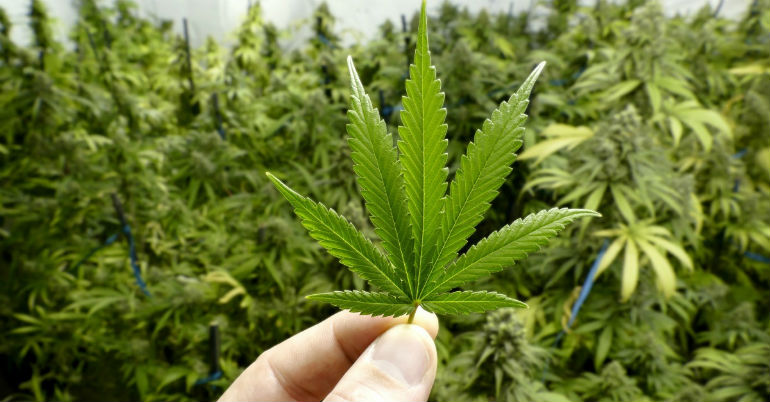
The American public still has many concerns about federal marijuana legalization.
Public Concern 1: Cannabis as a Gateway Drug
One of the biggest public health concerns – and one that’s even been repeated by former U.S. Attorney General Jeff Sessions – is that marijuana is a gateway drug that leads people into harder substances such as opioids. Could this be true? Does enjoying an occasional joint lead people into a free-fall of hard drug abuse?
While this Reefer Madness-style scenario is a popular one with the anti-cannabis crowd, facts and statistics simply don’t bear it out. Even the website for the National Institute on Drug Abuse admits that the supposed linkage between cannabis and harder drugs is a weak one. After discussing the fact that people who use harder drugs tend to start out with marijuana, they admit that despite this linkage, it’s more likely a personal predisposition to using drugs that causes people to move on to more serious substances rather than cannabis itself. They also note that people who use hard drugs also tend to smoke cigarettes early on (and strangely, there is no campaign proclaiming that nicotine is a gateway drug…perhaps due to money and lobbying from the powerful tobacco industry?).
In direct opposition to the “gateway drug” theory, many researchers are looking into marijuana as a potential solution to the ongoing opioid crisis in the United States. Studies are revealing that cannabis may actually be a useful tool to help people with an opioid dependence step down off of the harder drugs with fewer side effects than current substance abuse treatments (which, as of 2019, consist of giving addicts more opioids such as methadone).
Research suggests that cannabis can ease opioid addiction in three ways. First, it helps calm the initial source of pain that causes many people to take drugs like Oxycontin or hydrocodone in the first place (some may initially get a prescription for back or neck pain, for example). Second, marijuana actually treats opioid withdrawal side effects such as extreme nausea and worsening pain throughout the body.
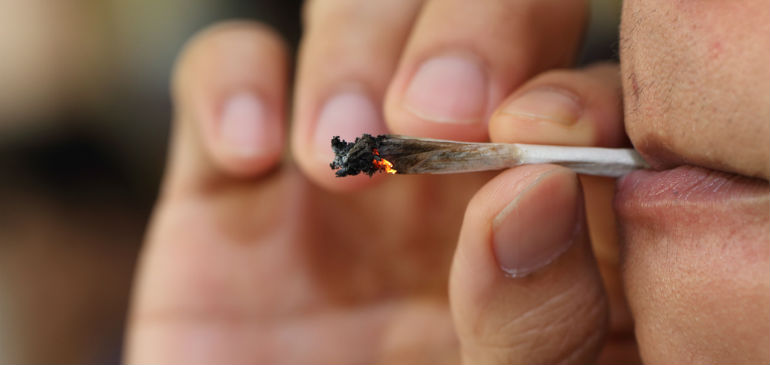
Rather than serving as a gateway to harder drugs, research shows that if federal cannabis laws were changed, marijuana could be used to help people break opioid addictions.
Finally – and most amazing of all – scientists are finding that marijuana can actually rewire the part of the brain that is modified by opioid addiction. This region of the brain is responsible for good decision-making and is part of the reason why opioid addicts can’t stop once they get started. With cannabis, people who are addicted can regain the ability to make healthy and responsible choices that help them get their lives back again.
Instead of banning cannabis to prevent addiction to drugs like opioids, science shows that legislators should allow opioid addicts to utilize cannabis to help them break their dependence on harder substances that are so damaging to their brains and bodies.
Public Concern 2: Toking and Driving
Another concern expressed by those opposed to marijuana legalization is that it will lead to an increase in cannabis-related automobile accidents. They point to studies like one out of Washington state that showed that after cannabis was legalized in that state, there was an increase in fatal motor vehicle crashes in which a driver tested positive for marijuana in their bloodstream.
The problem with these kinds of statistics is the method of substance testing involved. Unlike a breathalyzer for alcohol (which tests for the subject’s current state of impairment), a THC blood test will come back as positive if the subject consumed marijuana any time in the weeks before the test. This means the person may not be high at the time of the crash and marijuana could be incorrectly cited as the cause. If marijuana is legal in any state, more people will consume it, leading to a larger number of positive blood tests. This doesn’t correlate to marijuana as the cause for more fatal accidents, however, if it’s not clear that a driver was high at the time of an accident.
To combat uncertainty over this issue, companies like Hound Labs are creating marijuana breathalyzer tests that detect THC intoxication at the moment the test occurs. States like California are providing specialized police training to help visually recognize if someone is impaired. While these aren’t helpful if the driver is deceased, they’re definitely a step in the right direction in correctly determining if someone is driving while under the influence of marijuana. Efforts are also underway to educate the public that driving while baked means driving while intoxicated.
Public Concern 3: Cannabis Creates Crime
“THREE-FOURTHS OF THE CRIMES of violence in this country today are committed by DOPE SLAVES — that is a matter of cold record.”
This is a quote from one of William Randolph Hearst’s newspaper editorials in the 1930s. It would seem almost humorous if the same cannabis-crime link weren’t still being perpetuated by anti-cannabis activists in 2019.
In fact, statistics show that in areas with marijuana legalization, violent crime is on the decline. The Independent reported that in regions near the Mexican border where cannabis has been legalized for medical purposes, violent crime such as murders, robberies, and aggravated assault dropped by 12.5 percent after marijuana laws were passed. This is because drug trafficking groups don’t have a market to sell their product in areas with legal weed.
Some states like California have noticed that black market sellers from the East Coast are pouring into the state to buy legal weed to take home in order to sell it illegally.
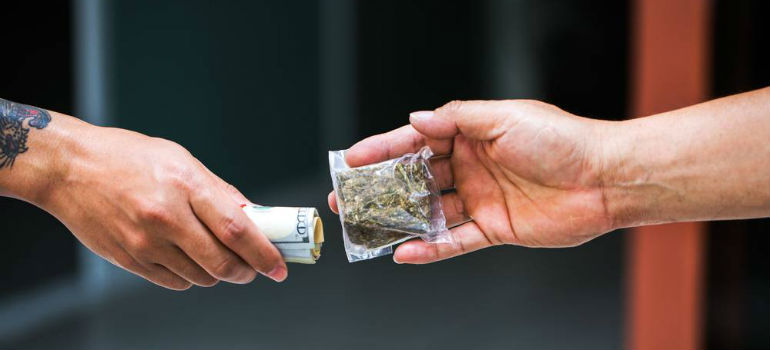
Federal decriminalization of marijuana would shrink the power of black market traffickers.
“[…I]t is not the people living in legal states that are causing the problems – it’s the thugs from areas of prohibition that are coming in to take advantage of the situation,” Sonoma County Agricultural Commissioner Tony Linegar told Forbes magazine.
It seems that the problem, then, isn’t states where cannabis is legal, but states where cannabis is illegal. Federal marijuana legalization would resolve these types of issues.
Public Concern 4: What About the Children?
“The fatal marihuana cigarette must be recognized as a DEADLY DRUG, and American children must be PROTECTED AGAINST IT.”
Here’s another scaremongering quote from a Hearst newspaper. When all other arguments against cannabis fail, “What about the children?” is a time-honored standby.
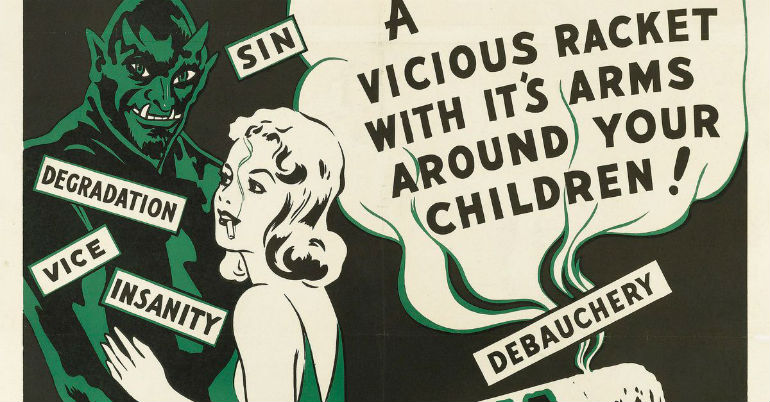
Anti-marijuana propaganda rooted in the Hearst era seems silly today – but do the same fears still exist?
When it comes to marijuana legalization at the federal level, some people are concerned about children being targeted by the marijuana industry the same way they’ve been targeted as potential customers by the tobacco industry. They point to marijuana-infused edibles, as well as flavored vaping oils and disposable vape pens, as potential products that might make cannabis more attractive to young people.
Cannabis activists point to the need for involvement and education from parents and other adults in regards to kids and cannabis. This includes keeping all cannabis products locked up and inaccessible to kids, just as one would do with nicotine and alcohol. If you grow marijuana or store edibles at home, it means making sure your plants and treats are enclosed where kids can’t get to them. It also includes talking openly and honestly with young people about cannabis.
It’s essential that kids understand that just because it’s legal for an adult to grow weed, pick up product from a local dispensary, or enjoy a puff or a weed brownie in their time off, this doesn’t mean that cannabis isn’t a substance to be taken seriously. They need to know about studies that show the negative effect cannabis has on developing brains. Just as with alcohol, they have to understand that marijuana is something for them to potentially enjoy in moderation when they’re an adult (unless they have a medical need for it as a child, of course).
Nothing More Than a Corporate Game
When people look at the history of federal cannabis laws in the U.S. and dive into the supposed reasons it’s still illegal, it becomes obvious how corporate interests have played a part in criminalizing and demonizing marijuana. Once the corporate players did their part and created a furor, the public took over and made cannabis into something to be feared rather than enjoyed and used for positive purposes.
As more states change their laws and countries like Canada legalize cannabis at the federal level, the stigma is lifting and the American government faces more pressure than ever to change its stance on marijuana. Until this change comes, medical patients, activists, and cannabis advocates in the United States will continue to push towards federal marijuana legalization.
Category Pages:
- Cannabis 101 - Cannabis information guide that ranges from cannabis culture to consumption methods.
- Cannabis and Cryptocurrency - A detailed guide to cryptocurrency and the cannabis industry.
- Cannabis and Driving - The effects of marijuana on driving; cannabis and professional drivers.
- Cannabis and Gaming - Marijuana's effect video game performance and why top gaming organizations are banning it.
- Cannabis and Parenting - A guide to the challenges parents face teaching kids about cannabis and navigating their own use while remaining responsible parents.
- Cannabis Decarboxylation - What decarboxylation does, as well as choosing the best decarb methods.
- Cannabis Facts - Fascinating info about cannabis history, facts about medical marijuana, and more.
- Cannabis Home Decor - A guide to chic and sophisticated 420 decoration ideas.
- Cannabis Prohibition - A guide to the history of marijuana prohibition in the U.S.
- Cannabis Tea - A guide to marijuana tea effects, its benefits, and how to make THC and CBD tea.
- Cannabis Technology - An overview of the ways marijuana technology has changed the cannabis industry.
- Cannabis Terpenes - A 101 guide to the uses, medical benefits, and research on marijuana terpenes.
- Cannabis Tourism - A guide to marijuana tourism in places with legal cannabis around the world.
- Federal Marijuana Legalization - (CURRENT PAGE)
- History of Cannabis - A sweeping history of marijuana and hemp from ancient times into the modern day.
- What Is 420? - What does 420 mean? A guide to the symbolism and origin of 420, as well as 4/20 day celebrations around the world.
- Cannabinoids - Exploration of cannabinoids, their effects, and their health benefits.
- Cannabis Types - A guide to the different types of marijuana: sativa, indica, hybrids, hemp, and ruderalis.
- Concentrates & Extracts - An exploration of cannabis concentrates & extracts from BHO and beyond.
- Cannabis & Health - A guide to the many benefits of marijuana, including medical and general health uses.

 Author: John White
Author: John White
This is a great historical synopsis about the legal issues surrounding cannabis, and it should probably be updated to mention how the 2018 Farm Bill has changed dramatically the legal status of CBD and its production and transport.